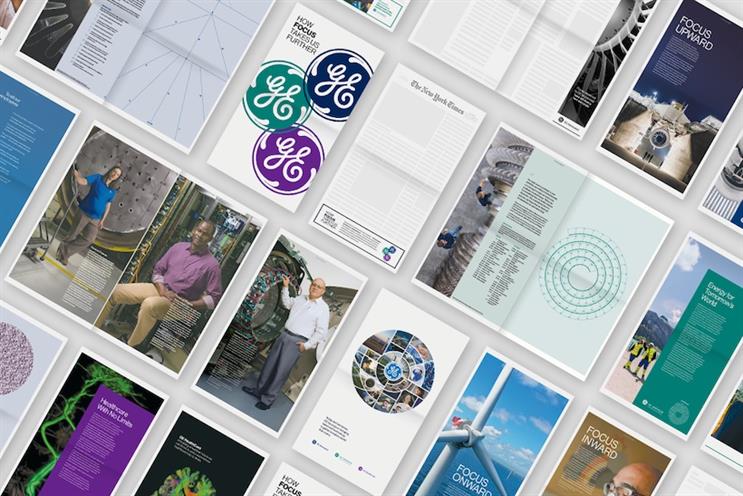
GE took over the entire Dec. 6. print edition of The New York Times. (Photo credit: GE)
As new platforms and trends relentlessly emerge, brands feel constant pressure to try the next buzziest thing – whether that’s launching in the metaverse or learning more about Web3.
But despite the pace of digital innovation, print remains a powerful medium for communicating big ideas.
On Dec. 6, GE took over the entire The New York Times print edition to communicate and promote its split into three separate companies: GE Healthcare, GE Vernova and GE Aerospace.
Created with agency Giant Spoon and T Brand Studio, the campaign centered on the theme of ‘focus.’ It featured interactive experiences throughout to create “focus breaks,” including paper airplanes to fold, crossword puzzles to solve and optical illusions to ponder. The campaign also made a statement as the first single-advertiser takeover in the paper’s 171-year history
While the multi-pronged campaign also included a takeover of The Daily podcast and other mobile and desktop activations, print was the main act. According to GE CMO Linda Boff, it was the right medium to take on GE’s complex message.
“It’s hard to tell the story of what GE is about to do in 15 or 30 or 60 seconds,” she said. “The luxury of 22 pages is to be able to take what we’re doing and drive it through the lens of focus.”
While print made sense in this for GE, it’s no secret that the medium is in steady decline. Newspaper publishers have seen their advertising revenues cut in half since 2002, according to the U.S. Census Bureau. Meanwhile consumer attention continues its steady march to digital platforms. According to eMarketer, by 2026, digital ad spend will surpass $385 billion to make up more than 80% of total U.S. ad spend.
Despite these figures, print maintains its place in the media mix. While it may no longer be the platform to achieve mass reach, it can work for creating big brand moments, as GE and The New York Times proved earlier this month.
According to Andrew Hunter, group creative director at Dentsu Creative, print is also useful because it forces creatives to distill complex business problems into simple creative ideas.
“I’m communicating every single thing I need to tell you in one shot,” he said.
He adds that print also offers an opportunity to create staying power and sit with consumers a little longer at a time of constant digital bombardment.
“I watch a commercial, and then it’s gone. I drive by a billboard, and it’s gone. Social? It’s a tweet. It’s fleeting. But what makes print different is that I’m able to sit there with it,” Hunter said.
Not all print campaigns, however, offer the luxury of a full-edition takeover of the world’s most iconic newspaper — meaning that for most brands, a print campaign needs to justify its investment.
“The medium needs to justify the execution,” said Nathan Reese, creative director at T Brand Studio. In the case of GE, for instance, print lent itself to interactivity and delight, as well as awareness, in ways that weren’t replicable digitally.
“I’m bullish on print for people using the medium in the right way, which is when the work that you’re doing is in direct conversation with the medium,” he said. “You can’t fold a paper airplane from a computer screen.”
Regardless of its allure for creatives, which face dwindling opportunities to paint their ideas on big canvases, print is definitely not a “frequency play,” Laura Correnti, partner at Giant Soon noted.
“It’s about telling a story in a really compelling way in front of the right audience with the potential to create earned value,” she said. “When you’re approaching the market from a strategic creative use case, as opposed to a commoditized efficiency play, you start to unpack all of the possibilities.”
A version of this article first appeared in Campaign UK.









